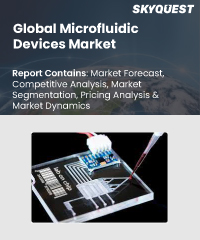
Report ID: SQMIG35H2120

Report ID:
SQMIG35H2120 |
Region:
Global |
Published Date: February, 2024
Pages:
157
|
Tables:
65 |
Figures:
75
Microfluidic Devices Market size was valued at USD 82.14 Billion in 2023 and is poised to grow from USD 96.35 Billion in 2024 to USD 345.35 Billion by 2032, growing at a CAGR of 17.3% during the forecast period (2025-2032).
The global microfluidic devices market has witnessed significant growth in recent years and is expected to continue expanding at a rapid pace. These devices find applications in various industries, including healthcare, pharmaceuticals, biotechnology, and research laboratories. Microfluidic devices enable the development of compact, portable, and cost-effective diagnostic tools that can deliver rapid and accurate results. These devices allow for the integration of multiple functions, such as sample preparation, analysis, and detection, into a single platform, making them ideal for use in resource-limited settings and remote areas. The healthcare industry has been a major adopter of microfluidic devices. These devices have revolutionized the field of medical diagnostics by enabling the miniaturization of laboratory processes, reducing the sample and reagent volumes required, and improving the speed and efficiency of testing. Microfluidic-based assays offer benefits such as faster turnaround times, lower costs, and the ability to perform multiplexed tests, allowing for simultaneous analysis of multiple biomarkers. These advantages have fueled the demand for microfluidic devices in applications such as molecular diagnostics, immunoassays, cell analysis, and genomics.
US Microfluidic Devices Market is poised to grow at a sustainable CAGR for the next forecast year.
Our industry expert will work with you to provide you with customized data in a short amount of time.
REQUEST FREE CUSTOMIZATIONWant to customize this report? This report can be personalized according to your needs. Our analysts and industry experts will work directly with you to understand your requirements and provide you with customized data in a short amount of time. We offer $1000 worth of FREE customization at the time of purchase.

Report ID: SQMIG35H2120